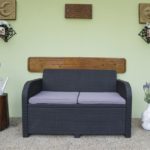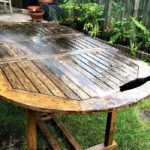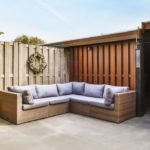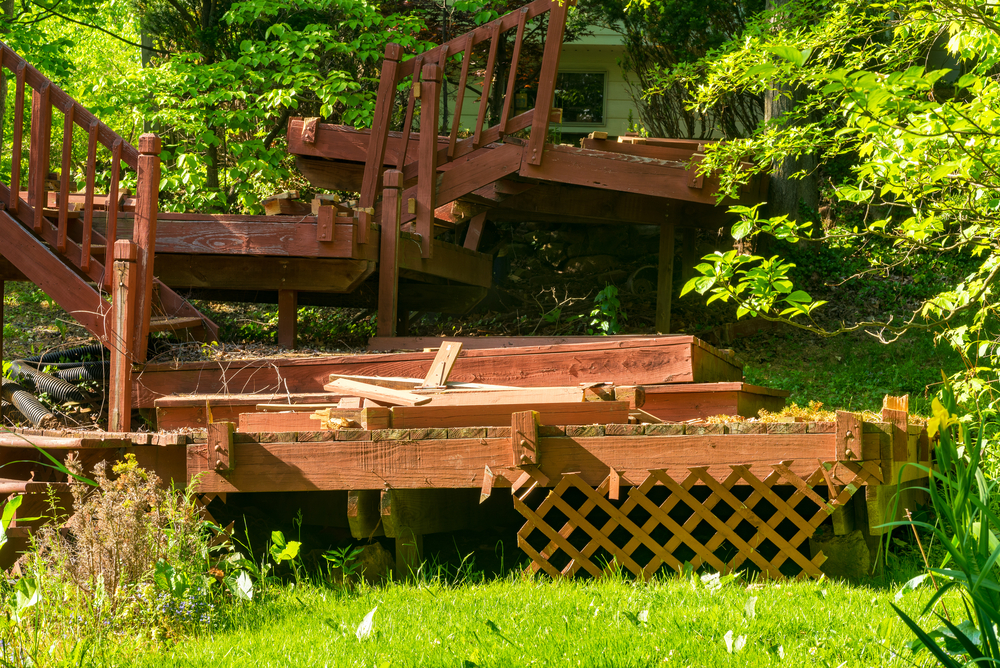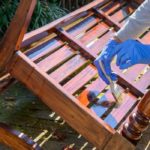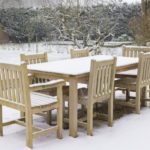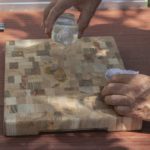Aluminum furniture is probably the most durable of all outdoor furniture types. It’s lightweight yet strong, doesn’t rust, and will last you through scorching sun and freezing cold. Unfortunately, aluminum is not immune to oxidation and weathering entirely, and may need some maintenance from time to time. Aluminum outdoor furniture can be restored.
There are several methods for restoring aluminum furniture. Depending on the amount of weathering, you can use a rust remover, sand followed by some buffing/waxing, or scrubbing with a vinegar wash. All of these methods remove dirt and restore luster. Re-painting is a simple option too.
Have you ever been through the heartbreak of having to throw out a favorite piece of outdoor furniture because it’s tarnished and rusted? Maybe it was from neglect, bad weather, cheap construction material, or something else entirely. But sometimes, a little bit of attention and elbow grease can save a piece of furniture that you might think is now trash. Let’s look at how you can restore aluminum furniture with a few simple methods!
How Can I Restore Aluminum Outdoor Furniture?
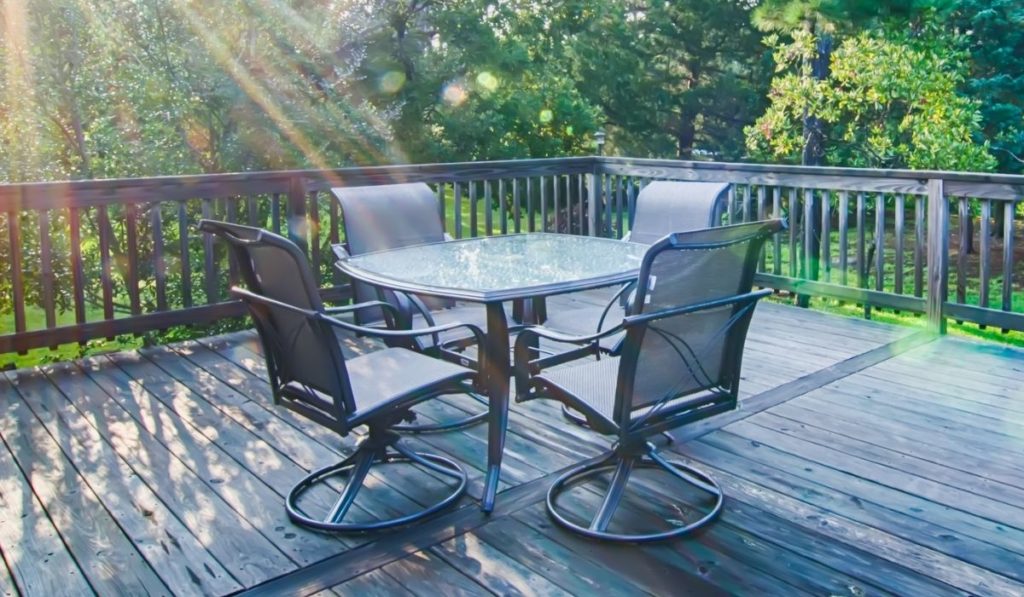
There are various ways to restore dull and rusty aluminum furniture pieces to their former glory. We will list some of the best and most effective methods below. However, these methods may use corrosive substances, so it’s important to be cautious.
Make sure you read through the instructions thoroughly before proceeding, use safety gloves (on Amazon) and protective eyewear (also on Amazon) where needed, and be sure to cover your working space with a tarp or plastic sheets to avoid damaging your floor.
Let’s take a look at each method in further detail.
Method 1: Sand & Repaint
Repainting is fairly inexpensive and relatively easy, and it’ll work on even the most severely oxidized aluminum furniture. All you need is the following:
- Medium grit sandpaper/electric sander
- Grease-cutting dish soap
- Water
- Old rag/sponges
- Epoxy primer
- Spray paint
- Rubber gloves
Start by sanding down the parts with any oxidation or flaking paint. You can use medium-grit sandpaper or an electric sander, whatever’s more convenient for you. Make sure the surface is smooth and paint-ready.
Wash away the dust using a garden hose.
Now, mix some dish soap with water and spray it on the furniture pieces generously. Scrub off all of the dirt using a scrubber or medium-rough sponge. Rinse off the soap and allow furniture to dry. If the furniture is too dirty, you can use special aluminum cleaners or mineral spirits to get it clean.
Once they’re completely dry, it’s time for some spray paint. Spray the pieces with primer first, and allow them to dry completely. Then apply at least two coats of paints of your choice. We recommend an indoor/outdoor polyurethane enamel because it’s tough and durable.
Method 2: Remove Rust & Repaint
The method is very similar to the one above. The only difference is, instead of sanding, you’ll use a special rust remover chemical.
After initial washing and cleaning, apply a heavy-duty rust remover. Let it sit for at least 5 minutes, then scrub away all the rust using a stiff brush and rinse off. Make sure you wear rubber gloves during this step.
Follow with a soap-water-rinse and then prime and paint as we mentioned above.
Method 3: Buff & Wax
This method is the simplest, though it may take a little longer than the others. It only works on very minimal oxidation and brings out the sheen.
Things you’ll need:
- Heavy-duty surface cleaner like the 303 Marine Multi-Surface Cleaner (on Amazon) has worked great for us)
- Typical sponges like you might have near the sink
- Any kind of car wax
Clean any dust or debris on furniture, as usual, using damp cloths or a garden hose.
Generously apply the surface cleaner to the furniture. Buff in a circular motion with sponges – you can use a brush for scrubbing if necessary.
If you notice rust spots on sharp edges, lightly sand them down with wire wool. Then rinse the piece thoroughly, ensuring there is no rust or chemical cleaner left. Finally, dry it with a clean rag and leave for a few hours.
Now it’s ready to be waxed. First, apply a generous coat of car wax with a clean cloth. Wait two minutes for the wax to dry, and then buff it off with a clean rag in a circular motion. You’ll notice shine and luster coming through.
Method 4: Vinegar Wash
You won’t need anything from the store for this method. Vinegar is the only item required, which you can probably find in your kitchen cabinet.
Start with an initial rinse to remove dirt.
Mix equal parts of vinegar and water. Then, liberally apply the solution on furniture with a clean sponge, and don’t forget any corners.
Rub off the surface with a scourer or brush, leave it for at least an hour, then rinse. Repeat if necessary.
This method is excellent for regular cleaning and maintenance. We don’t recommend using it as a first step to restore aluminum furniture, though.
Can I Sand My Aluminum Outdoor Furniture?
Sanding is absolutely the best solution to remove flaking paint, oxidation dust, and the dull surface of the aluminum. It removes the dull, uneven top layer and exposes a smooth, shiny surface, ready for some paint.
We recommend using 120 grit sandpaper or a power sander. When sanding a furniture piece, make sure all the surfaces are sanded evenly. Take care around edges or corners, especially if they have sharp points.
Aluminum is completely safe for sanding. However, there are doubts about epoxy primers and paint. So we recommend checking the manufacturer’s guidelines before sanding your furniture. If your furniture is powder coated, it’s best to wear a respirator and goggles.
Sanding is a messy process, so make sure you cover the area with drop sheets and always wet the sandpaper to avoid dust flying around.
What is a Good Cleaner For Aluminum Outdoor Furniture?
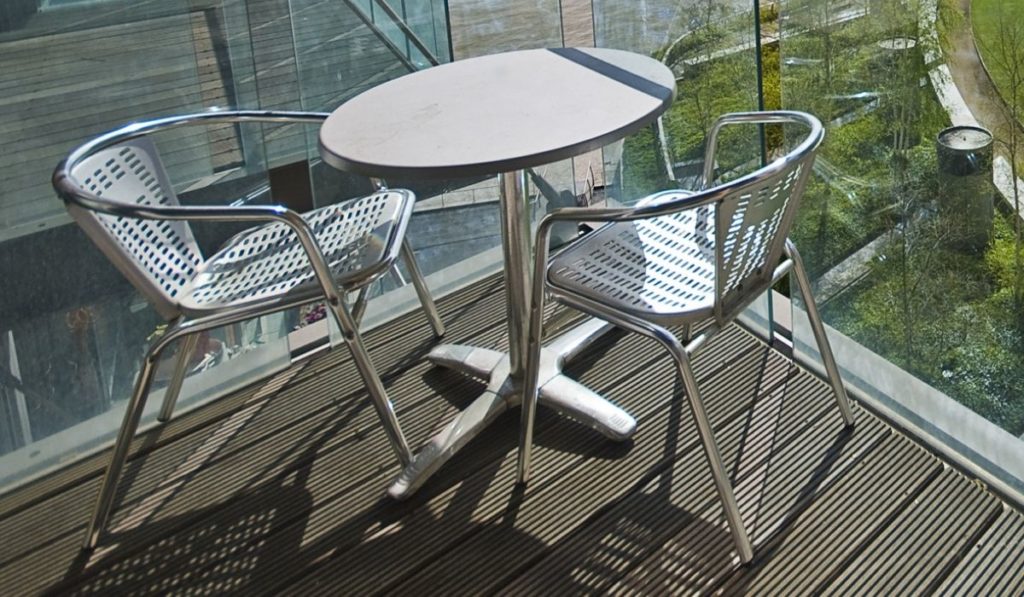
Good surface cleaners remove dirt, rust, and stubborn spots without damaging the surface. Many people use corrosive chemicals like hydrochloric acid and bleaches, but they’re very harmful to the environment. It would be best to go for non-toxic metal cleaners.
303 Marine multi-purpose cleaner (on Amazon) is versatile, safe on almost all surfaces, and environmentally friendly. You can always choose it to clean your aluminum patio furniture. Give it a try after sanding, and you’ll see how great it is.
Can I Use Alkaline Cleaners on My Aluminum Outdoor Furniture?
No, alkaline cleaners are not suitable for aluminum furniture. Any metal either, iron, aluminum, or steel, should never be cleaned with alkaline cleaners.
Alkaline cleaners have ammonia or trisodium phosphate (TSP). These chemicals oxidize the metal. In other words, they CAUSE rust which is particularly the thing we’re trying to avoid.
Though aluminum is a rust-resistant metal, alkaline cleaners can form oxidation spots on aluminum furniture, which is sort of how aluminum corrodes. So definitely avoid alkaline cleaners on aluminum.
How to Restore Aluminum Outdoor Furniture Without Painting
Not everyone is fond of painting their patio furniture. Some people love the look of natural, untainted, wrought aluminum. If you’re one of them, you’ll be happy to know that there are methods to restore your aluminum patio furniture without painting it.
As we explained above, the first process in restoration is removing the old paint and oxidation. And you can do that by either sanding or chemical cleaner.
- So start like usual, rinse your furniture with water to remove all dirt.
- If you plan on sanding, wear your protective gear and sand with 120 grit sandpaper. You can use a power sander if you want but make sure you cover all surfaces evenly. For chemical cleaners, apply the cleaner you’re using to a sponge and go over all surfaces. Give a light scrub to the surface and then rinse with water.
- Wash the surface again with a non-toxic and surface cleaner, 303 Marine Multi-Purpose Cleaner (on Amazon), for example. Once again, rinse with water and dry it all up with a clean towel or squeegee. Your aluminum furniture will be restored to its previous shine.
- Now you can apply a clear metal protectant or just leave the surface as it is. Sanding leaves a pretty matte finish on the aluminum, so it’s a good candidate if you want to retain that look.
- If you want some sheen and gloss, follow the second wash with wax. Pick a good car wax, apply it over the entire surface. Let it dry for a few minutes and then buff with a soft cloth. Then you’ll have a nice shiny aluminum patio set, ready to face the elements.

